
The North British Society (also known as "The Scots" and "Scots Club") was founded in Halifax, Nova Scotia in 1768, the oldest Scottish heritage society outside Great Britain. [2] North British is an adjective used as an alternative to "Scottish".

The North British Society (also known as "The Scots" and "Scots Club") was founded in Halifax, Nova Scotia in 1768, the oldest Scottish heritage society outside Great Britain. [2] North British is an adjective used as an alternative to "Scottish".
The Society was established "for the benefit of ourselves and assistance of each other, who may be afflicted with disease or any other casualty or misfortune." Since 1768, the Society has continued to support the Scottish community in Nova Scotia.
The Society met regularly at the Great Pontack (Halifax).
The Society likely commissioned the portrait of Prince Edward by William J. Weaver which now is in Province House (Nova Scotia) (1797). The Society raffled the portrait on the eve of the North British Society's local celebration of the St. Andrew's Day, when the patriotic sentiment was roused by the stunning news of Admiral Nelson's glorious naval victory over Napoleon in the Battle of the Nile. [3]
The Society public activities include commissioning three works for Victoria Park, Halifax: the Robert Burns statue (1919), the Sir Walter Scott bust (1932), and the Sir William Alexander cairn (1957).

The Court of Appeal for Nova Scotia is the highest appeal court in the province of Nova Scotia, Canada. There are currently 8 judicial seats including one assigned to the Chief Justice of Nova Scotia. At any given time there may be one or more additional justices who sit as supernumerary justices. The court sits in Halifax, which is the capital of Nova Scotia. Cases are heard by a panel of three judges. They publish approximately 80 cases each year.

Province House in Halifax is where the Nova Scotia legislative assembly, known officially as the Nova Scotia House of Assembly, has met every year since 1819, making it the longest serving legislative building in Canada. The building is Canada's oldest house of government. Standing three storeys tall, the structure is considered one of the finest examples of Palladian architecture in North America.

Scottish colonisation of the Americas comprised a number of failed or abandoned Scottish settlements in North America; a colony at Darien on the Isthmus of Panama; and a number of wholly or largely Scottish settlements made after the Acts of Union 1707, and those made by the enforced resettlement after the Battle of Culloden and the Highland Clearances.
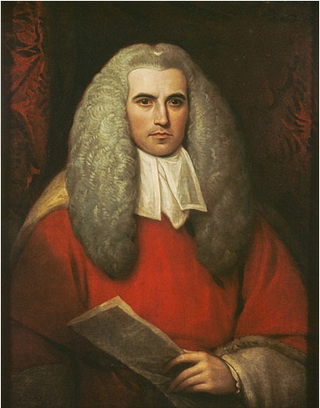
Sir Thomas Andrew Lumisden Strange was a chief justice in Nova Scotia, known for waging "judicial war" to free Black Nova Scotian slaves from their owners. From 1789 to 1797, he was the sixth Chief Justice of Nova Scotia. He became the first Chief Justice of the erstwhile Supreme Court of Madras and in that capacity was also the first Chief Justice of the Madras Presidency, British India from 1801 to 1817.

The Old Burying Ground is a historic cemetery in Halifax, Nova Scotia, Canada. It is located at the intersection of Barrington Street and Spring Garden Road in Downtown Halifax.

By the arrangements of the Canadian federation, the Canadian monarchy operates in Nova Scotia as the core of the province's Westminster-style parliamentary democracy. As such, the Crown within Nova Scotia's jurisdiction is referred to as the Crown in Right of Nova Scotia, His Majesty in Right of Nova Scotia, or the King in Right of Nova Scotia. The Constitution Act, 1867, however, leaves many royal duties in the province specifically assigned to the sovereign's viceroy, the lieutenant governor of Nova Scotia, whose direct participation in governance is limited by the conventional stipulations of constitutional monarchy.

The history of Nova Scotia covers a period from thousands of years ago to the present day. Prior to European colonization, the lands encompassing present-day Nova Scotia were inhabited by the Mi'kmaq people. During the first 150 years of European settlement, the region was claimed by France and a colony formed, primarily made up of Catholic Acadians and Mi'kmaq. This time period involved six wars in which the Mi'kmaq along with the French and some Acadians resisted the British invasion of the region: the French and Indian Wars, Father Rale's War and Father Le Loutre's War. During Father Le Loutre's War, the capital was moved from Annapolis Royal, Nova Scotia, to the newly established Halifax, Nova Scotia (1749). The warfare ended with the Burying the Hatchet ceremony (1761). After the colonial wars, New England Planters and Foreign Protestants immigrated to Nova Scotia. After the American Revolution, Loyalists immigrated to the colony. During the nineteenth century, Nova Scotia became self-governing in 1848 and joined the Canadian Confederation in 1867.

Sir Brenton Halliburton was the eighth Chief Justice of the Supreme Court of Nova Scotia.

Scottish Canadians are people of Scottish descent or heritage living in Canada. As the third-largest ethnic group in Canada and amongst the first Europeans to settle in the country, Scottish people have made a large impact on Canadian culture since colonial times. According to the 2016 Census of Canada, the number of Canadians claiming full or partial Scottish descent is 4,799,010, or 13.93% of the nation's total population. Prince Edward Island has the highest population of Scottish descendants at 41%.
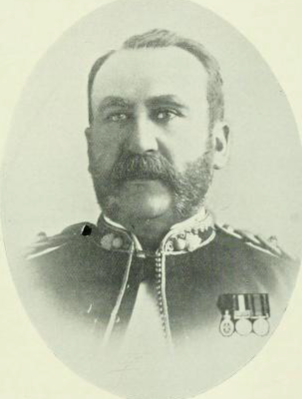
Charles John MacDonald was a lawyer and political figure in Nova Scotia, Canada. He represented Halifax County in the Nova Scotia House of Assembly from 1878 to 1879 as a Liberal-Conservative member. He was a member of the North British Society.

Nova Scotia is a Canadian province located in Canada's Maritimes. The region was initially occupied by Mi'kmaq. The colonial history of Nova Scotia includes the present-day Maritime Provinces and the northern part of Maine, all of which were at one time part of Nova Scotia. In 1763, Cape Breton Island and St. John's Island became part of Nova Scotia. In 1769, St. John's Island became a separate colony. Nova Scotia included present-day New Brunswick until that province was established in 1784. During the first 150 years of European settlement, the colony was primarily made up of Catholic Acadians, Maliseet, and Mi'kmaq. During the last 75 years of this time period, there were six colonial wars that took place in Nova Scotia. After agreeing to several peace treaties, the long period of warfare ended with the Halifax Treaties (1761) and two years later, when the British defeated the French in North America (1763). During those wars, the Acadians, Mi'kmaq and Maliseet from the region fought to protect the border of Acadia from New England. They fought the war on two fronts: the southern border of Acadia, which New France defined as the Kennebec River in southern Maine, and in Nova Scotia, which involved preventing New Englanders from taking the capital of Acadia, Port Royal and establishing themselves at Canso.
Baddeck, Nova Scotia is a village founded in 1908, with a history stretching back to early Mi'kmaq, French, and British settlements. The village was home to Alexander Graham Bell and was witness to the first flight in the commonwealth with Bell's Silver Dart.
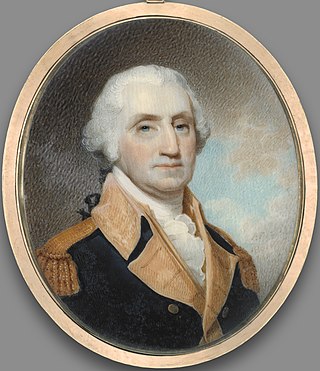
Robert Field (1769–1819) was a painter who was born in London and died in Kingston, Jamaica. According to art historian Daphne Foskett, author of A Dictionary of British Miniature Painters (1972), Field was "one of the best American miniaturists of his time." During Field's time in Nova Scotia at the beginning of the nineteenth century, he was the most professionally trained painter in present-day Canada. He worked in the conventional neo-classic portrait style of Henry Raeburn and Gilbert Stuart. His most famous works are two groups of miniatures of George Washington, commissioned by his wife Martha Washington.
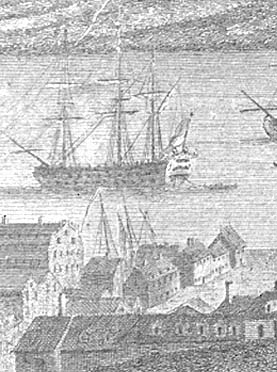
The Great Pontack was a large three-story building, erected by the Hon. John Butler, previous to 1754, at the corner of Duke and Water Streets in Halifax, Nova Scotia. It was named after the famous Pontack Club in London. The first resident professional company in Canada was The American Company of Comedians, believed to have performed at The Great Pontack, Halifax, in the summer and fall of 1768.

Formally known as "His Majesty's Council of Nova Scotia", the Nova Scotia Council (1720–1838) was the original British administrative, legislative and judicial body in Nova Scotia. The Nova Scotia Council was also known as the Annapolis Council and the Halifax Council. After 1749, when the judicial courts were established, the Nova Scotia Council was limited to administrative and legislative powers.
William Joseph Weaver (1759-1817) was an artist born in London who came to prominence in North America. His portrait of Alexander Hamilton hangs in the United States State Department, and his full-length portrait of Prince Edward, Duke of Kent and Strathearn, hangs in Province House, Canada. He also worked for Joseph Booth's Polygraphic Society.

The Halifax School for the Deaf was an institution in Halifax, Nova Scotia, Canada, which opened on 4 August 1856. It was the first school of the deaf in Atlantic Canada. There was later a dispute over who the true founder was, William Gray (1806-1881), a deaf Scottish immigrant who was the first teacher in the back room of a house in Argyle Street, or George Tait (1828-1904), another deaf Scot, who claimed to have been the driving force behind the establishment of the school. Gray was sacked in 1870 for being intoxicated and for threatening pupils with violence.
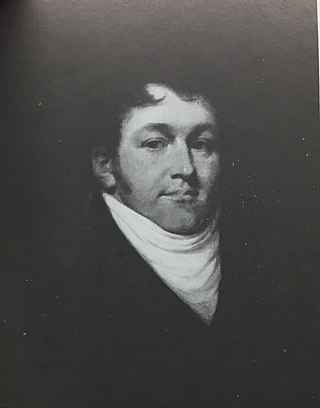
William Bowie (1762-1819) was a prominent merchant of Halifax, Nova Scotia who was killed in the last fatal duel on record in Nova Scotia. At age 20, William Bowie arrived in Nova Scotia in 1782 from Stirling, Scotland, the son of Alexander Bowie and Janet Murdoch. He became president of the North British Society. Under the mentorship of Alexander Brymer, Bowie founded the firm Bowie & DeBlois and in a few years amassed a fortune and Bowie became a leading citizen in Halifax.
Endnotes